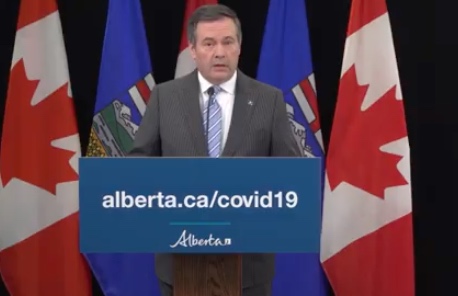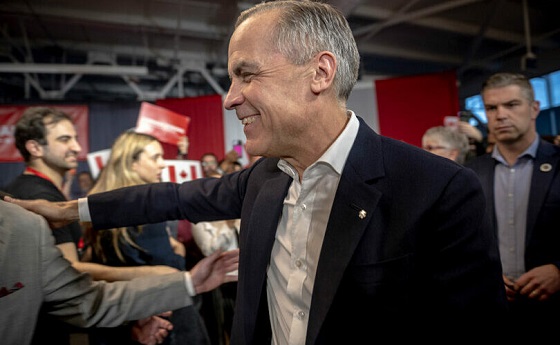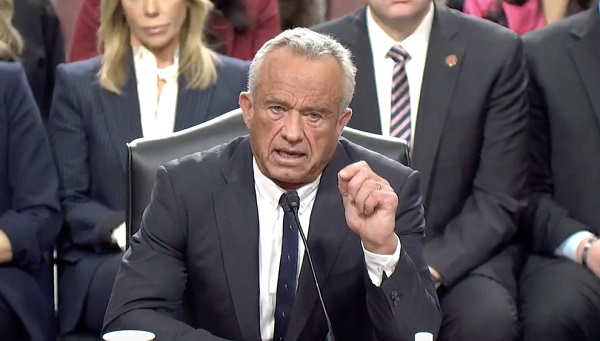Alberta
Alberta ramps up vaccine rollout

Alberta’s government will bring in four new measures starting immediately to ramp-up the COVID-19 vaccine rollout as infections and hospitalizations rise.
The new measures will mean about 500,000 more Albertans will be eligible to be vaccinated starting April 7.
“We are in a race between the vaccines and variants, and finally doses are arriving in significant numbers. We will use these to aggressively expand our rollout, speeding up the timelines and expanding the ways that we get the doses to Albertans. We will meet or surpass our promise to offer every adult a first dose by June 30.”
“Our health officials are working hard to make new shipments of vaccine available to Albertans as soon as they arrive. I strongly urge Albertans to get immunized as soon as they are eligible. When it’s your turn, please sign up for your shot, show up for your appointment and follow up for your second dose.”
Opening bookings to everyone in Phase 2B
Starting April 7 at 8 a.m., anyone born in 2005 or earlier with eligible underlying health conditions can book appointments for the COVID-19 vaccine at participating pharmacies or with Alberta Health Services (AHS) online or by calling 811.
Those currently eligible under Phase 2B are Albertans with underlying health conditions born in or before 1973. This amounts to about 150,000 Albertans. By expanding to those born in 2005 or before, 500,000 more Albertans will be eligible.
Information on eligible health conditions, including examples, is available at alberta.ca/vaccine.
AstraZeneca vaccine available for Albertans 55+
Albertans aged 55 to 64 who do not have a chronic health condition can now make an appointment to receive the AstraZeneca vaccine.
Effective immediately, anyone born between 1957 and 1966 can book appointments at participating pharmacies across the province. AHS will also begin booking appointments starting on Monday, April 12.
The AstraZeneca vaccine is safe and effective at reducing severe illness from COVID-19. The rare blood clots reported in Europe have not been reported in Canada, and risk of COVID-19 infection is far greater than any vaccine risk.
Based on current evidence, Albertans who are 55 and older who are diagnosed with COVID-19 are at least 10 times more likely to be admitted to the intensive care unit from COVID-19, and at least 45 times more likely to need hospital treatment for COVID-19, than they are to experience any form of the rare, treatable blood clots reported in Europe.
Eligible Albertans in this phase can choose to wait to receive a Pfizer or Moderna vaccine to be available to them when Phase 2D opens in May.
Rapid flow clinics
Bookings for rapid flow clinics in Grand Prairie, Fort McMurray, Red Deer, Lethbridge and Medicine Hat will open on Friday, April 9. More clinics will open in Edmonton and Calgary next week.
Bookings can be made with Alberta Health Services (AHS) online or by calling 811.
Pharmacy walk-ins
Alberta will soon expand its vaccine rollout at participating pharmacies to allow walk-in bookings, rather than those by appointment only. Additional information will be shared when pharmacy walk-ins become available next week.
Alberta’s government is responding to the COVID-19 pandemic by protecting lives and livelihoods with precise measures to bend the curve, sustain small businesses and protect Alberta’s health-care system.
Alberta
Red Deer Justice Centre Grand Opening: Building access to justice for Albertans

The new Red Deer Justice Centre will help Albertans resolve their legal matters faster.
Albertans deserve to have access to a fair, accessible and transparent justice system. Modernizing Alberta’s courthouse infrastructure will help make sure Alberta’s justice system runs efficiently and meets the needs of the province’s growing population.
Alberta’s government has invested $191 million to build the new Red Deer Justice Centre, increasing the number of courtrooms from eight to 12, allowing more cases to be heard at one time.
“Modern, accessible courthouses and streamlined services not only strengthen our justice
system – they build safer, stronger communities across the province. Investing in the new Red Deer Justice Centre is vital to helping our justice system operate more efficiently, and will give people in Red Deer and across central Alberta better access to justice.”

Government of Alberta and Judiciary representatives with special guests at the Red Deer Justice Centre plaque unveiling event April 22, 2025.
On March 3, all court services in Red Deer began operating out of the new justice centre. The new justice centre has 12 courtrooms fully built and equipped with video-conference equipment to allow witnesses to attend remotely if they cannot travel, and vulnerable witnesses to testify from outside the courtroom.
The new justice centre also has spaces for people taking alternative approaches to the traditional courtroom trial process, with the three new suites for judicial dispute resolution services, a specific suite for other dispute resolution services, such as family mediation and civil mediation, and a new Indigenous courtroom with dedicated venting for smudging purposes.
“We are very excited about this new courthouse for central Alberta. Investing in the places where people seek justice shows respect for the rights of all Albertans. The Red Deer Justice Centre fills a significant infrastructure need for this rapidly growing part of the province. It is also an important symbol of the rule of law, meaning that none of us are above the law, and there is an independent judiciary to decide disputes. This is essential for a healthy functioning democracy.”
“Public safety and access to justice go hand in hand. With this investment in the new Red Deer Justice Centre, Alberta’s government is ensuring that communities are safer, legal matters are resolved more efficiently and all Albertans get the support they need.”
“This state-of-the-art facility will serve the people of Red Deer and surrounding communities for generations. Our team at Infrastructure is incredibly proud of the work done to plan, design and build this project. I want to thank everyone, at all levels, who helped make this project a reality.”
Budget 2025 is meeting the challenge faced by Alberta with continued investments in education and health, lower taxes for families and a focus on the economy.

Quick facts
- The new Red Deer Justice Centre is 312,000 sq ft (29,000 m2). (The old courthouse is 98,780 sq ft (9,177 m2)).
- The approved project funding for the Red Deer Justice Centre is about $191 million.
Alberta
CPP another example of Albertans’ outsized contribution to Canada

From the Fraser Institute
By Tegan Hill
Amid the economic uncertainty fuelled by Trump’s trade war, its perhaps more important than ever to understand Alberta’s crucial role in the federation and its outsized contribution to programs such as the Canada Pension Plan (CPP).
From 1981 to 2022, Albertan’s net contribution to the CPP—meaning the amount Albertans paid into the program over and above what retirees in Alberta received in CPP payments—was $53.6 billion. In 2022 (the latest year of available data), Albertans’ net contribution to the CPP was $3.0 billion.
During that same period (1981 to 2022), British Columbia was the only other province where residents paid more into the CPP than retirees received in benefits—and Alberta’s contribution was six times greater than B.C.’s contribution. Put differently, residents in seven out of the nine provinces that participate in the CPP (Quebec has its own plan) receive more back in benefits than they contribute to the program.
Albertans pay an outsized contribution to federal and national programs, including the CPP because of the province’s relatively high rates of employment, higher average incomes and younger population (i.e. more workers pay into the CPP and less retirees take from it).
Put simply, Albertan workers have been helping fund the retirement of Canadians from coast to coast for decades, and without Alberta, the CPP would look much different.
How different?
If Alberta withdrew from the CPP and established its own standalone provincial pension plan, Alberta workers would receive the same retirement benefits but at a lower cost (i.e. lower CPP contribution rate deducted from our paycheques) than other Canadians, while the contribution rate—essentially the CPP tax rate—to fund the program would likely need to increase for the rest of the country to maintain the same benefits.
And given current demographic projections, immigration patterns and Alberta’s long history of leading the provinces in economic growth, Albertan workers will likely continue to pay more into the CPP than Albertan retirees get back from it.
Therefore, considering Alberta’s crucial role in national programs, the next federal government—whoever that may be—should undo and prevent policies that negatively impact the province and Albertans ability to contribute to Canada. Think of Bill C-69 (which imposes complex, uncertain and onerous review requirements on major energy projects), Bill C-48 (which bans large oil tankers off B.C.’s northern coast and limits access to Asian markets), an arbitrary cap on oil and gas emissions, numerous other “net-zero” targets, and so on.
Canada faces serious economic challenges, including a trade war with the United States. In times like this, it’s important to remember Alberta’s crucial role in the federation and the outsized contributions of Alberta workers to the wellbeing of Canadians across the country.
-

 2025 Federal Election2 days ago
2025 Federal Election2 days agoMark Carney Wants You to Forget He Clearly Opposes the Development and Export of Canada’s Natural Resources
-

 International1 day ago
International1 day agoPope Francis’ body on display at the Vatican until Friday
-

 2025 Federal Election2 days ago
2025 Federal Election2 days agoCanada’s pipeline builders ready to get to work
-

 Business2 days ago
Business2 days agoHudson’s Bay Bid Raises Red Flags Over Foreign Influence
-

 2025 Federal Election23 hours ago
2025 Federal Election23 hours agoFormer WEF insider accuses Mark Carney of using fear tactics to usher globalism into Canada
-

 2025 Federal Election9 hours ago
2025 Federal Election9 hours agoCarney’s Hidden Climate Finance Agenda
-

 COVID-191 day ago
COVID-191 day agoRFK Jr. Launches Long-Awaited Offensive Against COVID-19 mRNA Shots
-

 2025 Federal Election1 day ago
2025 Federal Election1 day agoCanada’s press tries to turn the gender debate into a non-issue, pretend it’s not happening



